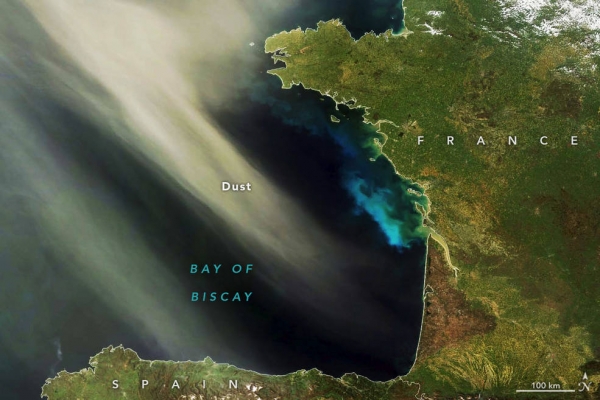For the past few decades, scientists have been observing natural ocean fertilization events — episodes when plumes of volcanic ash, glacial flour, wildfire soot, and desert dust blow out onto the sea surface and spur massive blooms of phytoplankton. But beyond these extreme events, there is a steady, long-distance rain of dust particles onto the ocean that promotes phytoplankton growth just about all year and in nearly every basin.
In a new study published May 5 in the journal Science, a team of researchers from Oregon State University, the University of Maryland Baltimore County, and NASA combined satellite observations with an advanced computer model to home in on how mineral dust from land fertilizes the growth of phytoplankton in the ocean. Phytoplankton are microscopic, plant-like organisms that form the center of the marine food web.
Phytoplankton float near the ocean surface primarily subsisting on sunlight and mineral nutrients that well up from the depths or float out to sea in coastal runoff. But mineral-rich desert dust — borne by strong winds and deposited in the ocean — also plays an important role in the health and abundance of phytoplankton.
Read more at NASA
Image: This image, acquired on April 8, 2011, with the Moderate Resolution Imaging Spectroradiometer (MODIS) instruments on NASA’s Terra satellite, shows Saharan dust over the Bay of Biscay. A phytoplankton bloom makes the water appear bright green and blue. Sediment is likely contributing to some of the color, especially in coastal areas. (Credits: NASA Earth Observatory image by Wanmei Liang, using MODIS data from NASA EOSDIS LANCE and GIBS/Worldview.)


